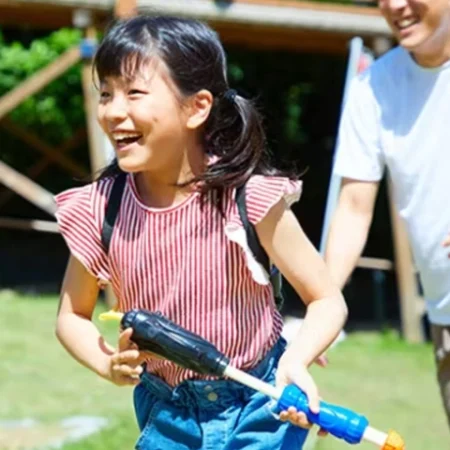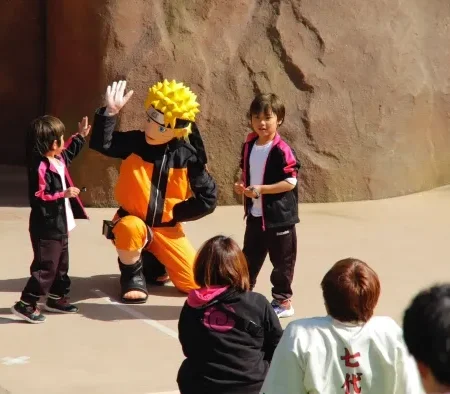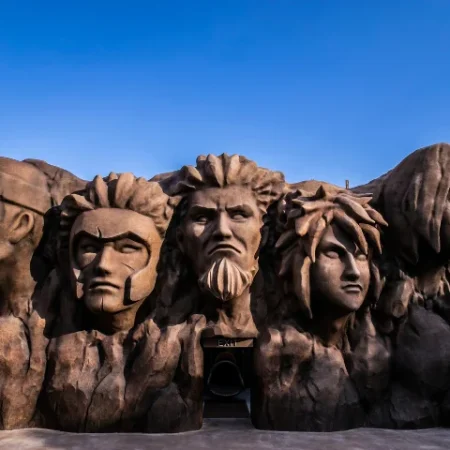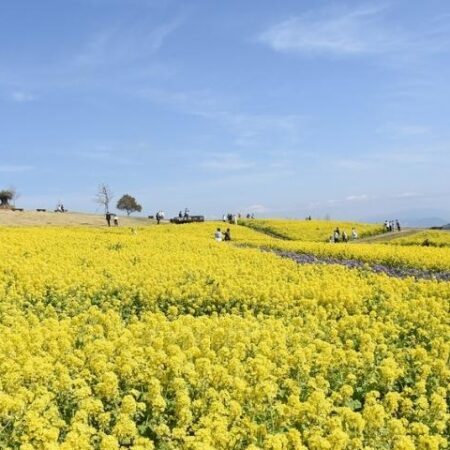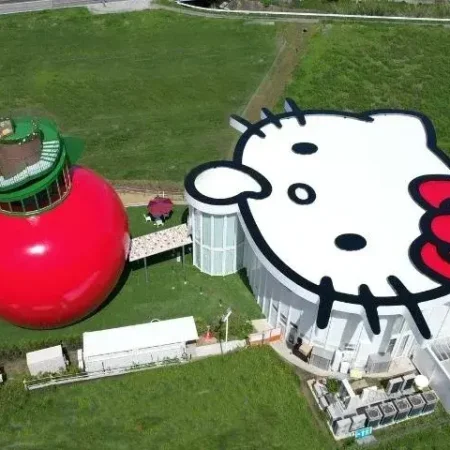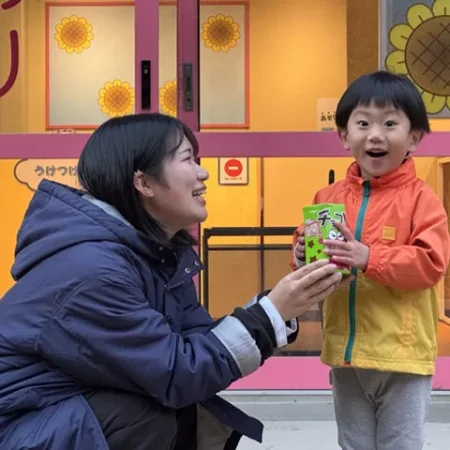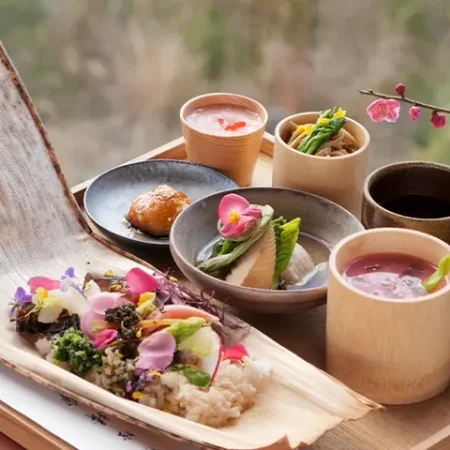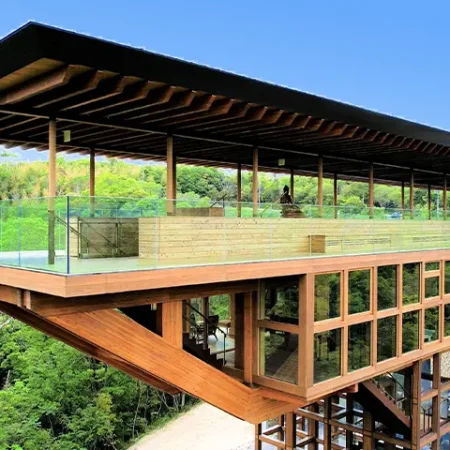Farm Resort San San Villa, a hotel with agricultural experience in the fields of Awaji Island, will open on August 1, 2025 (Friday) in the Awaji Nature Lab & Resort (Awaji City, Hyogo Prefecture), a nature circulation garden. Buildings with different designs at this hotel complex will offer an accommodation that will enable guests to experience the charm of a life with agriculture.
Table of Contents
- What is “Farm Resort San San Villa”?
- Examples of Buildings at Farm Resort San San Villa
- “Tower and Garden (“Tower House”)” (Designer: Sousuke Fujimoto Architects) *Scheduled to open this fall.
- “Dobouan (Moon House)” (Designer: Ryuichi Ashizawa + Studioonsite + Ryuichi Ashizawa Academic Lab, University of Shiga Prefecture)
- House of Fields and Windows (Oak House)” (Designer: ON Design Partners Inc.)
- List of Architects
- Overview of Accommodation Plans
What is “Farm Resort San San Villa”?

The soon-to-open “Farm Resort San San Villa” is an eco-friendly hotel designed by nine architects active in Japan and abroad based on the concept of “living with agriculture” and friendly to both the environment and people. The facility consists of 11 buildings, each of which has a different design. The building materials, interior materials, and amenities are made of natural materials to the maximum extent possible in consideration of the environment, while at the same time creating spaces that harmonize with the surrounding nature, such as fields and forests. In addition, guests can learn about sustainable lifestyles and experience a truly rich lifestyle of well-being while interacting with nature through all five senses by staying overnight on the farm and experiencing agriculture.
Through the opening of “Farm Resort San San Villa,” we will communicate the importance of “agriculture” and “food,” which support people’s health and life, and “nature,” which is the root of affluence. Furthermore, we would like to increase the number of people interested in agriculture and contribute to expanding the population involved in agriculture by helping people experience the richness of incorporating agriculture into their daily lives.
Examples of Buildings at Farm Resort San San Villa
“Tower and Garden (“Tower House”)” (Designer: Sousuke Fujimoto Architects) *Scheduled to open this fall.

It is characterized by a tower used as a living room, around which individual rooms are clustered and connected. A staircase that goes around the inside and outside of the tower leads from the interior to the garden on the roof, and to the top where one can enjoy a panoramic view of the surroundings. Despite its small size, the architecture allows visitors to find a variety of places to stay.
“Dobouan (Moon House)” (Designer: Ryuichi Ashizawa + Studioonsite + Ryuichi Ashizawa Academic Lab, University of Shiga Prefecture)

The house was designed using soil, bamboo, and straw from the daily life of Awaji Island. The earthen tower (bathroom) in the center gently divides the space, while the walls made of straw, bamboo, and soil softly wrap around the entire space, creating a continuous space.
House of Fields and Windows (Oak House)” (Designer: ON Design Partners Inc.)
Composed of two “architectural” elements: three-dimensionally stacked windows and volumes of cork, a natural material; the two face each other and intermingle to create a space within a small house that has diverse scales and relationships with the fields, forests, and surrounding nature.
List of Architects
-Ryuichi Ashizawa + Studioonsite + Ryuichi Ashizawa Academic Lab, University of Shiga Prefecture
-Mr. Satoshi Itasaka (Representative Director, the design labo Inc.)
-Mr. Eiichiro Goto (President, Goto Lumber Co., Ltd.)
-Mr. Takushi Nakamura (NAP Architectural Design Office Inc.)
-Mr. Tsukasa Nishida (Representative, ON Design Partners Inc.)
-Mr. Mr. Masahiro Harada / Mr. Mago (President, Mount Fuji Architects Studio, Inc.)
-Aurelle Ebie, Armand Louis, Patrick Raymond (atelier oï)
-Sousuke Fujimoto (President, Sousuke Fujimoto Architects)
-Ayako Makinojima (President, Hito to Kominka Co.)
Overview of Accommodation Plans
The following four contents will be offered on a vast site of approximately 38,000㎡ surrounded by nature. Under the theme of “agriculture, food, and housing,” the accommodation will provide guests with opportunities to experience the richness of a life with agriculture and the symbiosis between nature and people, and foster a sense of value in terms of how to live, consume, and choose goods in consideration of the environment and health.
Accommodation: “Farm Resort San San Villa” (scheduled to open on August 1, 2025)
The facility uses natural materials for construction, interior materials, and amenities as much as possible, and is designed to be environmentally friendly and healthy for both people and the environment. Staying guests can experience a living space that is one with nature. In addition, an area is available for guests to experience agriculture exclusively.
Dining: Farmhouse Restaurant “Haru San San”
Cuisine: The restaurant offers dishes that take into account taste, color, and nutritional balance, such as dishes that make full use of the original flavors of the ingredients, mainly vegetables grown in the fields surrounding the restaurant and ingredients produced on Awaji Island.
Design: The restaurant adopts an environmentally friendly design that makes use of renewable materials. The restaurant uses “thatch,” which can be reused as compost, as a roofing material, and “paper tubes” made from recycled paper as a construction material for the pillars.
Field Work
Provides opportunities for people to realize a healthy body and mind and a fulfilling lifestyle by incorporating the blessings of nature. We offer programs that combine agriculture and cooking, composting, and other activities that are easy to participate in, as well as year-round programs that allow participants to learn specialized knowledge.
[Examples of Fieldwork]
-Composting experience to learn about the food cycle
-Making fermented foods such as miso, soy sauce, and amazake
-Cooking and making tea and bath salts using vegetables from the fields and Japanese herbs such as mugwort and shiso
Lab: “Nature and Life Research Institute”
Specialized people from companies, craftsmen, universities, and research institutes involved in SDGs projects and natural recycling-oriented manufacturing will gather to disseminate information through seminars and workshops.




